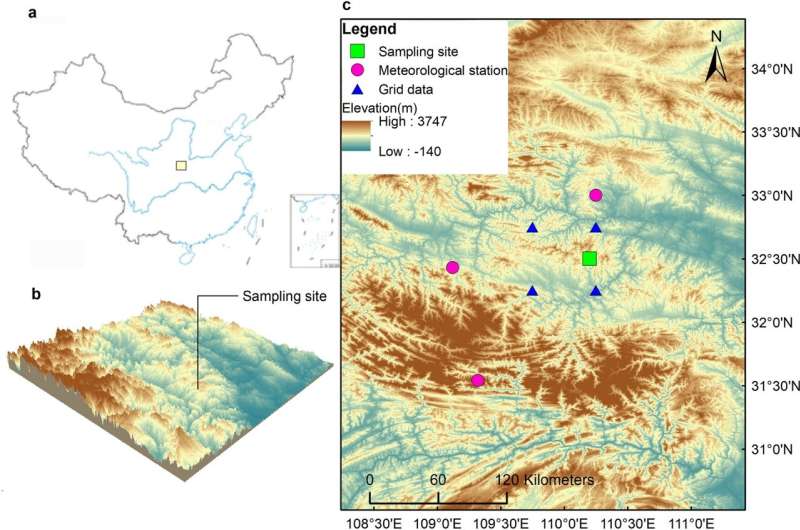This article has been reviewed according to Science X's editorial process and policies. Editors have highlighted the following attributes while ensuring the content's credibility:
fact-checked
trusted source
proofread
Non-summer hydrothermal variations in north subtropical China over the past 200 years

Located in the core area of the Asian monsoon, China's subtropical regions have a large population and abundant forest resources, and great potential for carbon sequestration. Increasing global warming not only threatens China's subtropical regions with drought, but also significantly affects the dormancy period of subtropical trees. This highlights the dominant role of non-growing season hydro (precipitation)—thermal (temperature) conditions on tree growth, which has not been considered before.
Researchers from the Institute of Earth Environment of the Chinese Academy of Sciences studied the variations non-summer (previous September to current May) hydrothermal condition from 1830 to 2017 in northern subtropical China by analyzing the radial growth of Pinus henryi Mast.
The study was published in Trees on Nov. 27.
The researchers found that the non-summer hydrothermal condition was the limiting factor of tree growth in the study area. A relatively cold-wet hydrothermal pattern generally favored high tree growth in 1848–1850, 1893–1898, 1907–1915, 1962–1965 and 1968–1972, whereas a warm-dry climate in 1872–1879, 1923–1931 and 1990–2003 caused unfavorable conditions and led to low tree growth. The current decade is in the process of changing from a warm-dry to a cold-wet non-summer climate, indicating an increasing carbon sequestration potential in the study area.
The study highlights that the non-summer hydrothermal variations in north subtropical China are influenced by the El Niño–Southern Oscillation (ENSO) and sunspot activity at high frequencies, but by the synergistic effects of the Atlantic Multidecadal Oscillation (AMO) and Pacific Decadal Oscillation (PDO) at low frequencies. It also emphasizes that AMO mainly regulates precipitation variability, while PDO has a more pronounced effect on temperature variability.
More information: Hanyu Zhang et al, Non-summer hydrothermal conditions controlling tree growth in north subtropical China are closely related to AMO and PDO, Trees (2023). DOI: 10.1007/s00468-023-02467-5
Provided by Chinese Academy of Sciences




















